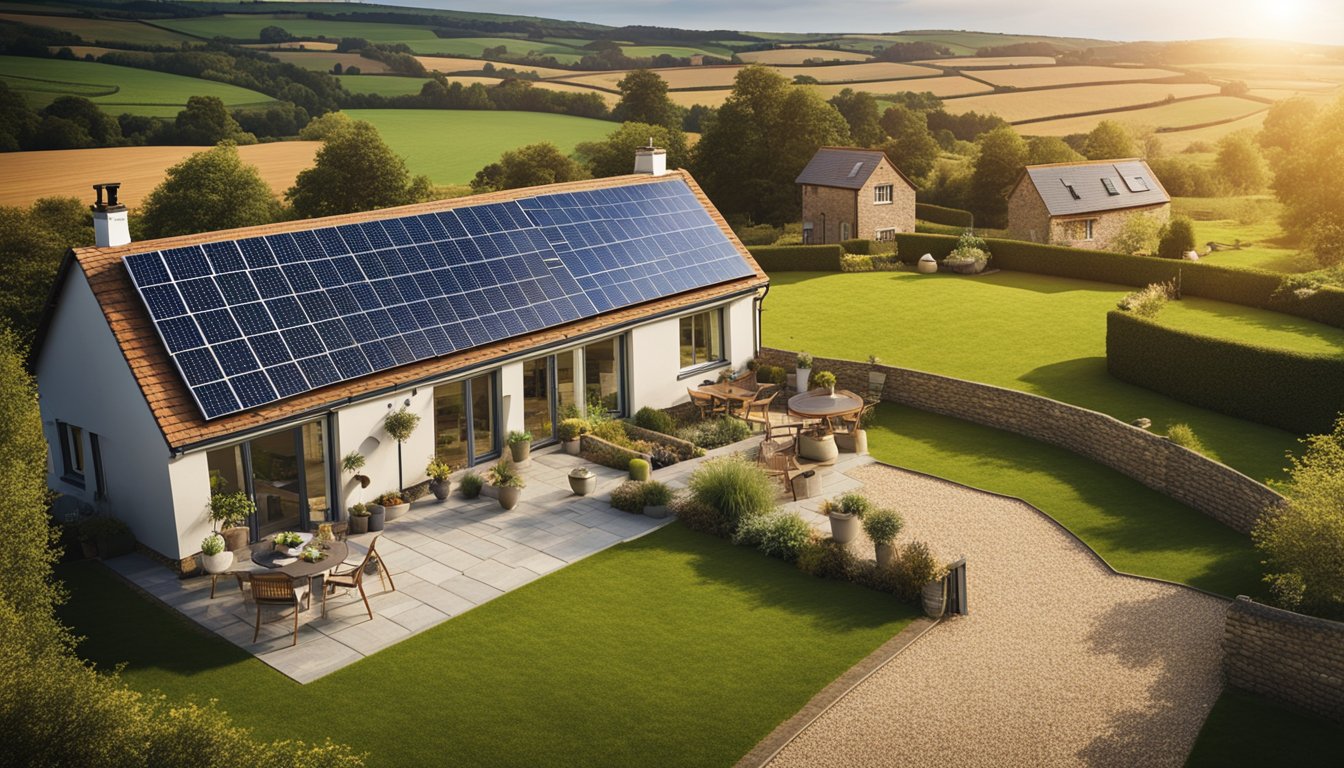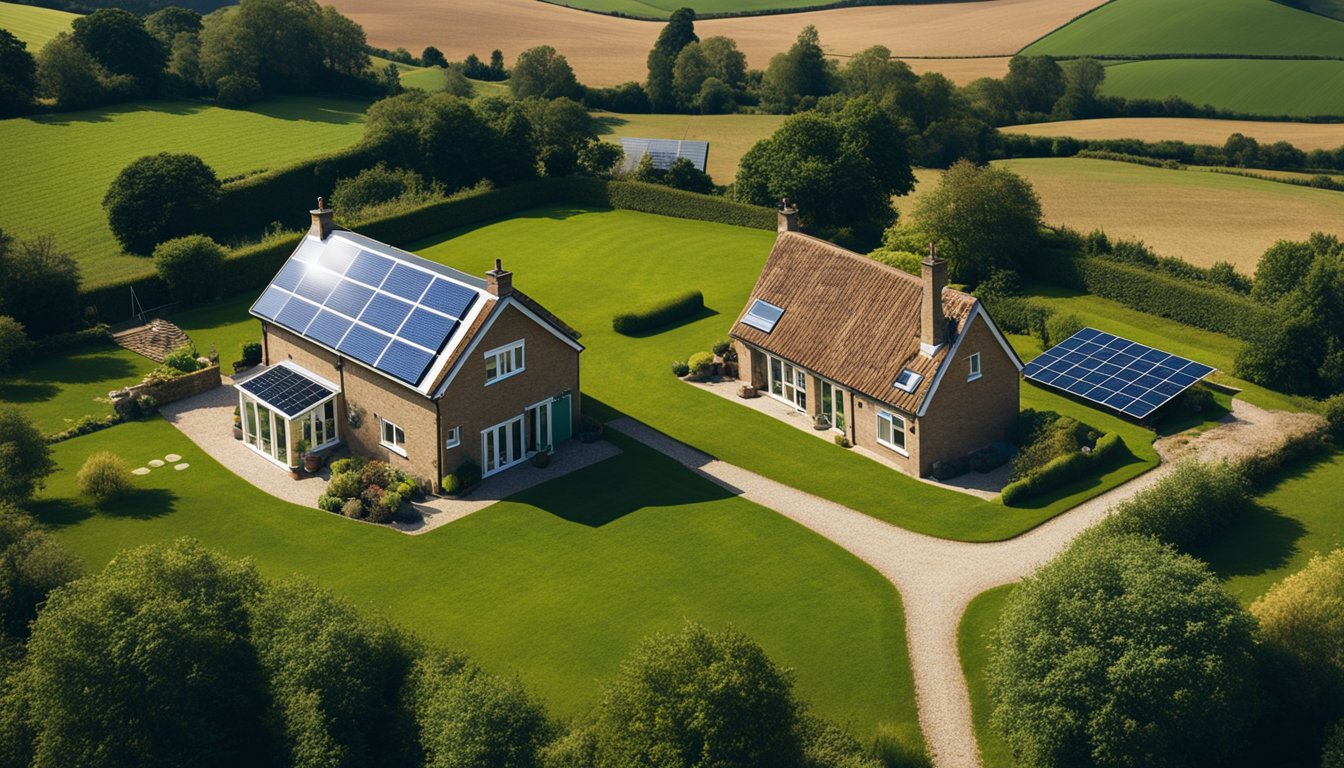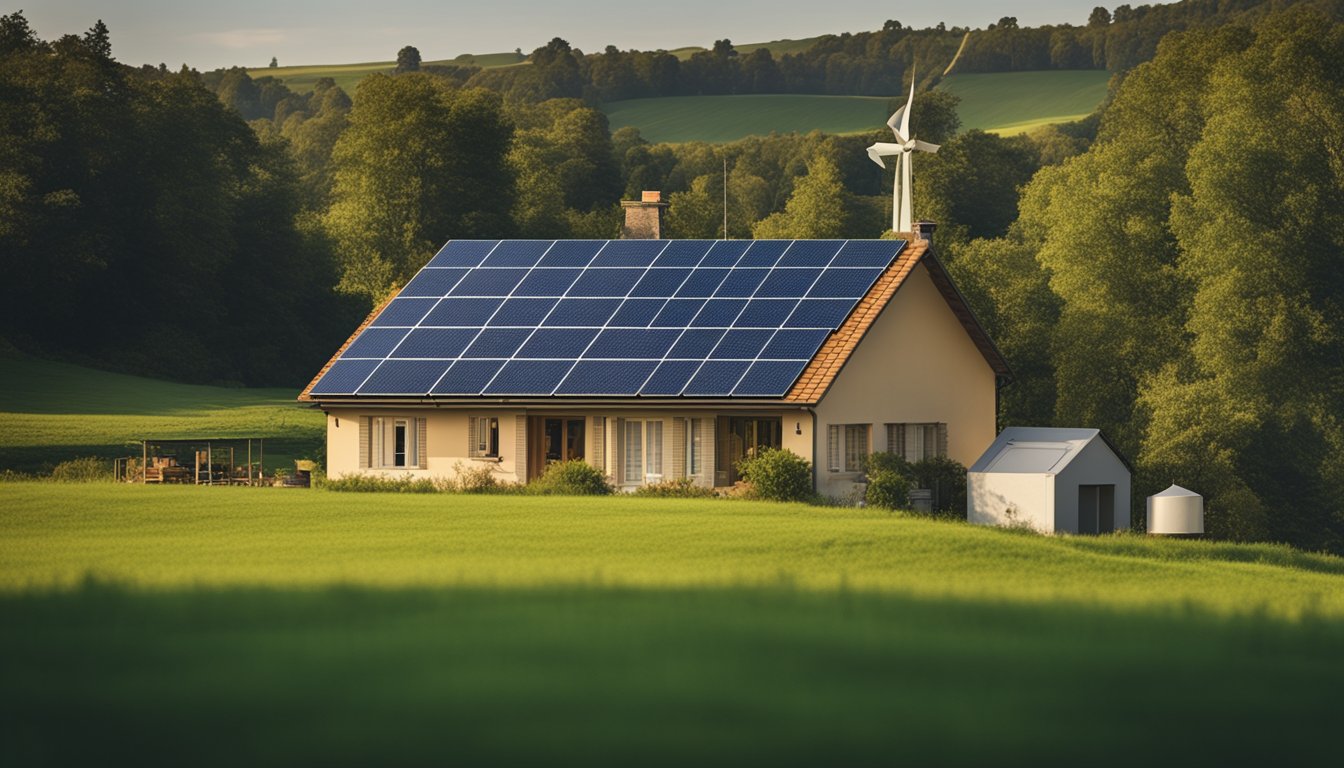Late updated: 06 Jan 2025 15:01
Written by: Oliver Bennett
Eco-Friendly Innovations For Rural UK Home Connectivity: Transforming Access with Sustainable Solutions
Exploring eco-friendly innovations for rural UK home connectivity is more than just technological advancement; it's about bridging the gap between rural and urban living with sustainable solutions. Sustainable connectivity options are essential for enhancing the quality of life in rural areas, providing opportunities for education, work, and community engagement without compromising the environment. As an increasing number of rural households embrace digital lifestyles, the need for reliable and eco-conscious internet solutions has never been greater.

With more than 75% of UK premises now accessing gigabit-capable broadband, the nation's countryside is witnessing a transformation. This connectivity boom presents a unique opportunity to leverage green technologies, ensuring the rural population can participate fully in the digital world while preserving the beautiful landscapes they call home.
The advancements in fibre optics, combined with eco-friendly infrastructure, promise to deliver both high speed and sustainability. By embracing these innovative technologies, rural communities can enjoy both cutting-edge connectivity and an environmentally responsible lifestyle, promoting digital inclusion and economic development.
Key Takeaways
- Rural connectivity is becoming more sustainable and eco-friendly.
- Gigabit-capable broadband is transforming rural UK communities.
- Green tech ensures high-speed internet with environmental benefits.
Building Sustainable Rural Connectivity

Sustainable rural connectivity is essential for bridging the digital divide in rural communities of the UK. Through government programmes, energy innovations, and community engagement, we can create environmentally friendly solutions that promote economic growth and social inclusion.
Government Initiatives for Digital Integration
To address the digital disparity, government initiatives like Project Gigabit and the Shared Rural Network play a vital role. These programmes aim to bring high-speed broadband to the hardest-to-reach rural areas, improving access to fast and reliable internet services.
Investments in these initiatives facilitate digital integration by focusing on policy alignment, resource allocation, and collaboration with local stakeholders. These efforts not only enhance connectivity but also bolster opportunities in fields like education and healthcare, thus fostering sustainable rural development.
Advancements in Renewable Energy Solutions
Renewable energy is integral to sustainable connectivity. Implementing solar panels and wind turbines can provide reliable power to support broadband installations in rural regions. Such innovations reduce the environmental impact by utilising clean energy sources, aligning with the sustainability goals of rural development.
Moreover, enhancing energy efficiency through advanced technologies minimises the carbon footprint, offering an eco-friendly alternative to traditional energy methods. This approach ensures energy resilience for rural areas while supporting their connectivity needs and boosting regional economies.
Enhancing Agricultural and Local Community Engagement
Agricultural sectors and local communities are key stakeholders in connectivity projects. By involving them in decision-making and deployment processes, we strengthen the link between digital infrastructure and local needs.
Collaborative strategies can promote connectivity in ways that benefit agriculture, such as enabling precision farming through enhanced internet access. For local communities, digital tools facilitate community building and improve daily life aspects like education and business opportunities.
Community-led initiatives also encourage collective ownership and engagement, fostering a sense of responsibility towards maintaining and improving these infrastructure projects. Through these efforts, sustainable connectivity becomes a shared goal that enhances both the social fabric and economic potential of rural UK.
Innovative Technologies and Infrastructure

Innovative technologies are transforming connectivity in rural UK by optimising energy use, improving sustainable transport, and integrating IoT. These changes aim to bridge the digital divide and provide eco-friendly solutions for rural households. Let us take a closer look at some key areas of innovation.
Optimising Home Energy Utilisation
In our quest to optimise home energy use, smart thermostats and energy-efficient appliances play a central role. These technologies enable precise control over energy consumption, which is crucial for reducing waste.
LED lighting has revolutionised residential illumination by providing efficient lighting at lower energy costs. For rural homes, integrating renewable energy, such as solar panels and wind turbines, offers sustainable and self-sufficient energy sources.
Rainwater harvesting systems complement these technologies by reducing water usage and creating a more environmentally friendly household.
Sustainable Transportation and Connectivity
In rural areas, sustainable transportation options help support eco-friendly living and enhanced connectivity. Electric vehicles (EVs) are gaining popularity, supported by the expansion of charging infrastructure in the countryside. This shift is vital for reducing carbon emissions and dependence on fossil fuels.
Public transport improvements, including trains and buses, provide essential connectivity to rural communities. Cycling promotes health and environmental benefits, with expanded cycling lanes enhancing its practicality.
Joint efforts in developing gigabit-capable broadband ensure remote work and education accessibility, supporting diverse rural economies.
Integrating IoT for Enhanced Rural Livelihoods
The integration of the Internet of Things (IoT) enhances rural livelihoods by enabling real-time monitoring and control over various aspects of life. Smart farming technologies, such as precision agriculture and drones, optimise crop management and reduce environmental impact.
Bi-directional remote consultations offer vital healthcare services, improving access for remote communities. In homes, IoT solutions like connected security systems and smart home devices provide convenience and safety.
Telecommunications advancements aim to reduce the digital divide, making reliable connections more widely available. By leveraging IoT, rural communities can enjoy improved quality of life and economic opportunities.
Frequently Asked Questions

As we explore eco-friendly innovations for rural UK home connectivity, we address crucial points of sustainable technology, its integration into homes, and its role in enhancing both connectivity and environmental conservation. This section aims to provide clarity on these technologies and their benefits.
What are the latest sustainable technologies available for improving home connectivity in rural UK areas?
Current advancements include solar-powered Wi-Fi systems and energy-efficient routers. These technologies aim to reduce energy consumption while increasing connectivity speed and reliability. Fibre optic cables, being more eco-friendly and efficient than traditional counterparts, are also gaining momentum in rural areas, enhancing connectivity while minimizing environmental impact.
How can eco-friendly gadgets be integrated into the rural home to enhance internet connectivity?
Eco-friendly gadgets such as smart power strips and programmable thermostats can be integrated to optimise energy use. By reducing standby power consumption and enabling precise energy management, these devices contribute to a more efficient home network setup. Connectivity boosters powered by renewable energy can also support the expansion of service range.
What eco-friendly electronic products are recommended for energy-efficient rural home connectivity?
We recommend using eco-friendly routers and modems that feature low power consumption. These devices often come with energy-saving modes and automatic sleep functions. Additionally, solar-powered gadgets can supplement traditional electricity, making them ideal for eco-conscious rural settings.
What are some sustainable technology products that have been successful in UK rural home connectivity?
Solar panels paired with energy storage solutions have been successfully implemented in several rural UK homes, providing consistent power to internet systems. Wind-powered devices are another option, offering a complementary energy source. Moreover, the deployment of Full Fibre connectivity has proven to be both efficient and effective in multiple localities.
How do sustainable devices contribute to environmental conservation while providing rural connectivity solutions?
These devices typically use renewable energy sources or are designed to consume less power, significantly reducing carbon footprints. By lowering energy consumption, they not only ensure efficient connectivity but also aid in the conservation of natural resources, aligning with broader environmental goals in rural areas.
What are the effective eco-friendly products for rural homeowners seeking to improve their internet connection?
Rural homeowners can turn to solar chargers for network devices, reducing dependency on grid electricity. Further, utilising devices like low-energy networking hubs and Wi-Fi extenders can enhance connectivity without exacerbating energy usage. These options provide practical and sustainable solutions for improving home internet access.
